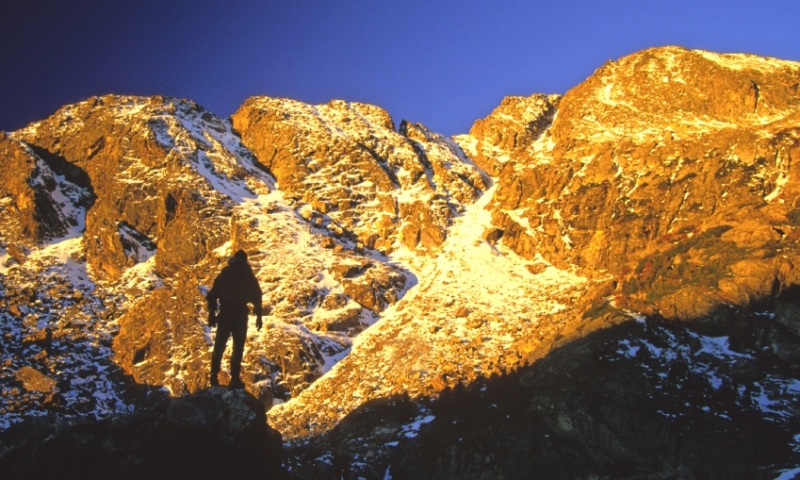- Indian Peaks Wilderness Area offers plentiful outdoor recreation
- Many of its peaks reach well above 12,000 feet
- Get to the Wilderness Area by following Highway 7 south of Estes Park
- Hike any of the 28 maintained trails in Indian Peaks Wilderness
- Fish Lake Isabelle for Greenback Cutthroat
Overview
Indian Peaks Wilderness Area in north central Colorado gets its name from a majority of its peaks having Native American names. Ogallala, Pajute, Pawnee, Shoshoni, Apache, Navajo, Arikaree, Arapahoe, and Niwot Peaks all reach well above 12,000 feet, making for breathtaking views of jagged summits that tower above green valleys and glacial lakes. Rocky Mountain National Park contains over 2,900 acres of Indian Peaks Wilderness.
Location/Directions
You can reach the Indian Peaks Wilderness by taking Colorado Highway 7 south from Estes Park to Colorado Highway 72. After 9.9 miles, turn right toward America Street and continue onto Brainard Lake Road. At Brainard Lake Recreation Area you’ll find many trailheads into the wilderness areas.
The contact information for the Arapaho and Roosevelt National Forests Headquarters Office is 2150 Centre Avenue, Building E, Fort Collins, CO 80526 and their phone is 970-295-6600.
Seasons
The Indian Peaks Wilderness Area is accessible all year. However, trails can remain snow-covered through June and into July.
Activities
There is much to do and much to be seen within Indian Peaks Wilderness Area. With about 133 miles of hiking trails, some of which make their way over 12,000 foot passes, it isn’t hard to believe why so many outdoor enthusiasts are drawn to this wilderness’ beauty and serenity.
- Hiking
With so many trails, it can be difficult to decide which to take. One favorite is the Arapaho Glacier Trail and is a seven-mile out-and-back trek of moderate skill with minimal elevation gain. Here you’ll see one of the few glaciers still found in the state. Another popular trail is the Arapaho Pass Trail to Lake Dorothy. A moderate to strenuous hike of 6.4 miles, you will love the wildflowers abloom here, as well as the views. With 28 maintained trails, there is plenty of hiking access and you’ll want to take advantage of it all. - Fishing
The lakes in Indian Peaks Wilderness must be reached by hiking. You will find four lakes in close proximity, one to the other, and all are great for fishing. These are Lake Isabelle, Mitchell Lake, Blue Lake and Long Lake. Catch some Greenback Cutthroat and brook trout. Use fly anglers and spinning rigs for the cutthroat and small flies and spinners for the brook trout. There are over 50 lakes in this wilderness area so plenty of fishing available. - Wildlife Watching
You’ll see an abundance of wildlife in the Indian Peaks Wilderness, including elk, moose, mountain lions, coyote, fox, black bear and much more.
Additional Info
Indian Peaks Wilderness Area was formed by glaciers. Its jagged and sawtooth-like ridges, glacial remnants like turquoise lakes and rock debris, as well as glaciers themselves are proof of their formation.
The history of the Indian Peaks Wilderness Area begins long ago when Paleo Indians used the area as a travel route over the mountains. Artifacts like stone tools, pottery, rock walls, cairn lines and shelters are also remnants of Arapahoe Indians who spent their summers in what is now the wilderness area.



